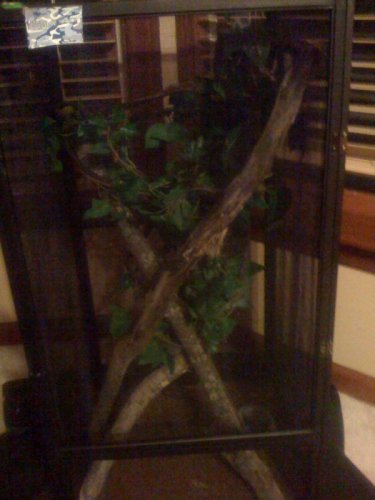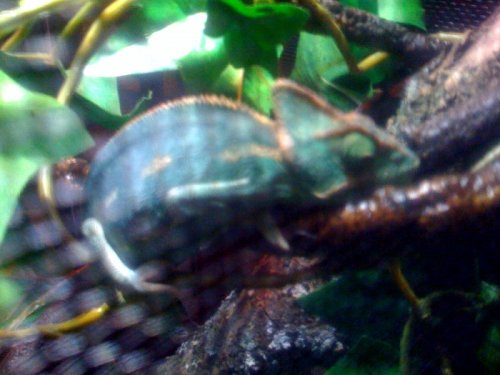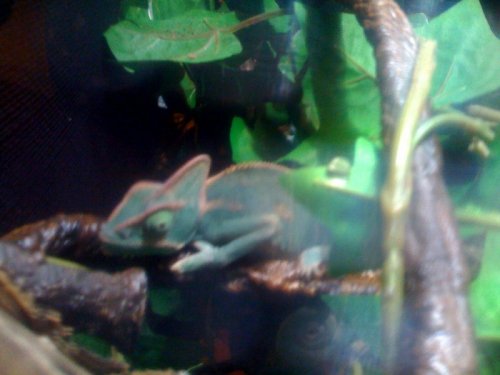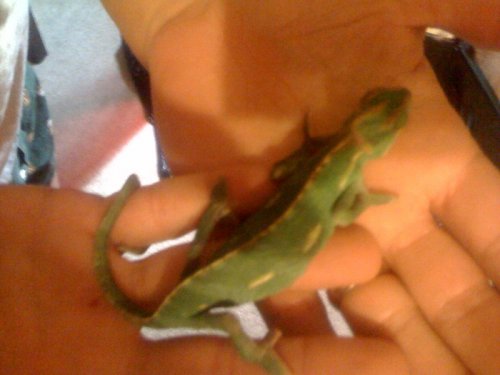WSumm97188
New Member
Chameleon Info:
* Your Chameleon - Veil Chameleon, male, less than year. Got him two months ago.
* Handling - Daily
* Feeding - Mealworms and crickets... 2 crickets a day, mealworms as wanted
* Supplements - once a week Reptifeed
* Watering - Mist it two-three times a day; yes, i've seen him drink but not today
* Fecal Description -looks like bird poop, white; never tested for parasites that i am aware
* History - been pretty happy thus far
Cage Info:
* Cage Type - Large Reptibreeze all screen cage
* Lighting - 2 white 100 watt bulbs during day and 2 100 red watt bulbs at night.
* Temperature - 80-100 by thermometer in cage. Lowest is about 70-80 at night.
* Humidity - don't monitor this
* Plants - just live tree (oak?) branches and artificial plants
* Placement - In living room. By a window, but not drafty. Top of the cage is 4 feet tall
* Location - ST Louis Missouri
Just noticed today that our chameleon is not eating (two days), not walking right, seems to have weak legs. When you pick him up he doesn't grab on he just kind of falls off of us. His eyes are open and look normal. His coloring today is brown to dark green which is normal for him.
Any suggestions? Having a hard time getting rep vet appointment, might not be until Wed... advice until then???
* Your Chameleon - Veil Chameleon, male, less than year. Got him two months ago.
* Handling - Daily
* Feeding - Mealworms and crickets... 2 crickets a day, mealworms as wanted
* Supplements - once a week Reptifeed
* Watering - Mist it two-three times a day; yes, i've seen him drink but not today
* Fecal Description -looks like bird poop, white; never tested for parasites that i am aware
* History - been pretty happy thus far
Cage Info:
* Cage Type - Large Reptibreeze all screen cage
* Lighting - 2 white 100 watt bulbs during day and 2 100 red watt bulbs at night.
* Temperature - 80-100 by thermometer in cage. Lowest is about 70-80 at night.
* Humidity - don't monitor this
* Plants - just live tree (oak?) branches and artificial plants
* Placement - In living room. By a window, but not drafty. Top of the cage is 4 feet tall
* Location - ST Louis Missouri
Just noticed today that our chameleon is not eating (two days), not walking right, seems to have weak legs. When you pick him up he doesn't grab on he just kind of falls off of us. His eyes are open and look normal. His coloring today is brown to dark green which is normal for him.
Any suggestions? Having a hard time getting rep vet appointment, might not be until Wed... advice until then???





